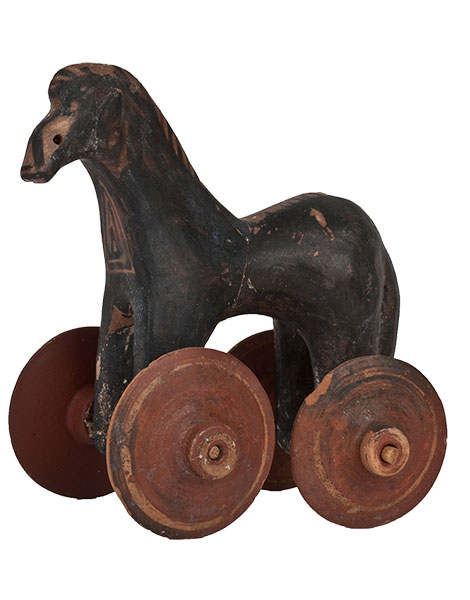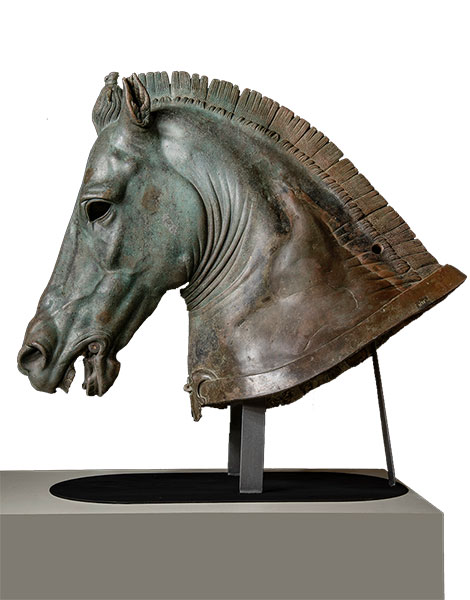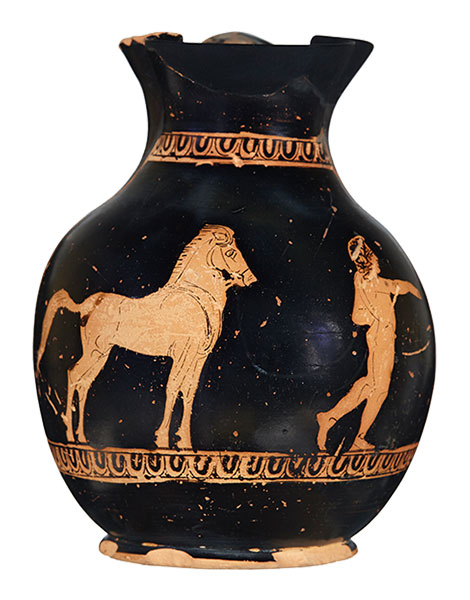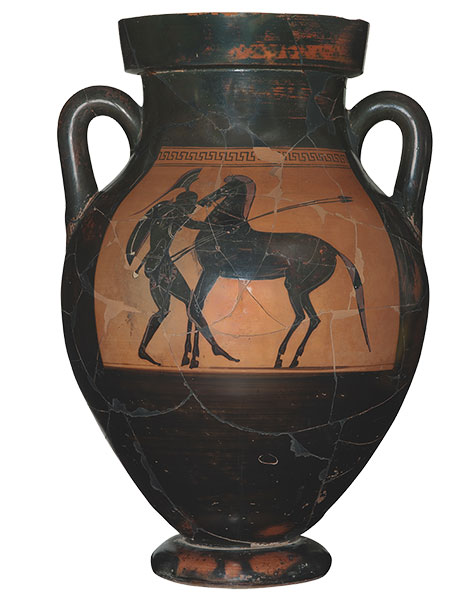Archaeological Sites Hosting Culinary Events
Ancient ruins meet modern recipes as…

The bronze bust of the horse dating from the 4th century BC, which turned out to be Greek during conservation works.
© Hellenic Ministry of Culture and Sports / Hellenic Organization of Cultural Resources Development (H.O.C.RE.D.)
The exhibition “Hippos: The Horse in Ancient Athens” is a gift to us all. Housed in the Gennadius Library of the American School of Classical Studies at Athens (ASCSA), the archaeological exhibition is one of high aesthetics, precision, economy and unexpected twists. Since its opening in January, it has been widely praised by the visiting public.
The idea of organizing an exhibition on ancient society, religion, childhood, power, beauty, death and love, with the horse as our guide, “Hippos,” the noble companion and comrade-in-arms of man for centuries, is in itself a source of inspiration and reflection. Curated by Professor Jenifer Neils, Director of ASCSA, “Hippos” includes more than 50 ancient artifacts, many of which are exhibited for the first time.

© G. Asvestas, Ephorate of Antiquities of the City of Athens – Kerameikos Museum. © Hellenic Ministry of Culture and Sports / Hellenic Organization of Cultural Resources Development (H.O.C.RE.D.)

Medici Riccardi's life-size bronze horse head
© Museo Archeologico Nazionale di Firenze (Direzione Regionale Musei della Toscana)
The exhibition, set by Paraskevi Gerolymatou and Andreas Georgiadis from Mikri Arktos, comprises a series of paths and niches, lined with exquisite showcases that are aided by clear and well-defined texts. Each of the exhibits is a celebration of the flow of time, but, in the Macedonian Hall of the Library, in a niche of the Makrigiannis wing, there is an exquisite object that awaits visitors.
While the exhibition will run until April 30, the bronze (originally gilded) bust of a horse in the small, atmospheric hall will remain on display until March 6. It comes from the National Archaeological Museum of Florence and was part of the collection of Lorenzo de’ Medici (1449-1492), who had as his tutor the scholar Ioannis Argyropoulos (1415-1487), a key figure in the spread of Greek culture to the West.

Red-figure oinochoe depicting a boy leading a horse
© American School of Classical Studies, Athenian Agora Excavations. Ephorate of Antiquities of the City of Athens © Hellenic Ministry of Culture and Sports / Hellenic Organization of Cultural Resources Development (H.O.C.RE.D.)

Attic black-figure amphora depicting a warrior mounting a horse
© S. Mavromatis, Ephorate of Antiquities of the City of Athens – Kerameikos Museum. © Hellenic Ministry of Culture and Sports / Hellenic Organization of Cultural Resources Development (H.O.C.RE.D.)
This beautiful work of art, exhibited for the first time in Greece, revealed a remarkable secret in 2015. “During conservation work, three Greek letters (X, N, L) were found carved on the right side of the horse’s neck near the mane. This shows, without a doubt, that the statue is Greek and that it was molded in the 4th century BC,” as stated in the presentation of the report. These extraordinary channels between the Greek and Italian worlds in the 15th century are one of the unexpected parameters of this exhibition, rich in references, narratives and artifacts.
The exhibits come from the collections of the National Archaeological Museum, the Acropolis Museum, the Ephorate of Antiquities of the City of Athens (Ancient Agora, Kerameikos, etc.), the Ephorate of Eastern Attica (including the Vravrona Museum), the Ephorate of Piraeus and Islands, the National Archaeological Museum of Florence, the State Museum of Baden (Karlsruhe) and the Numismatic Collection of Alpha Bank.
This article was previously published in Greek at kathimerini.gr.
Ancient ruins meet modern recipes as…
After a decade closed, the Archaeological…
The second phase of underwater archaeological…
With changing attitudes towards the restitution…